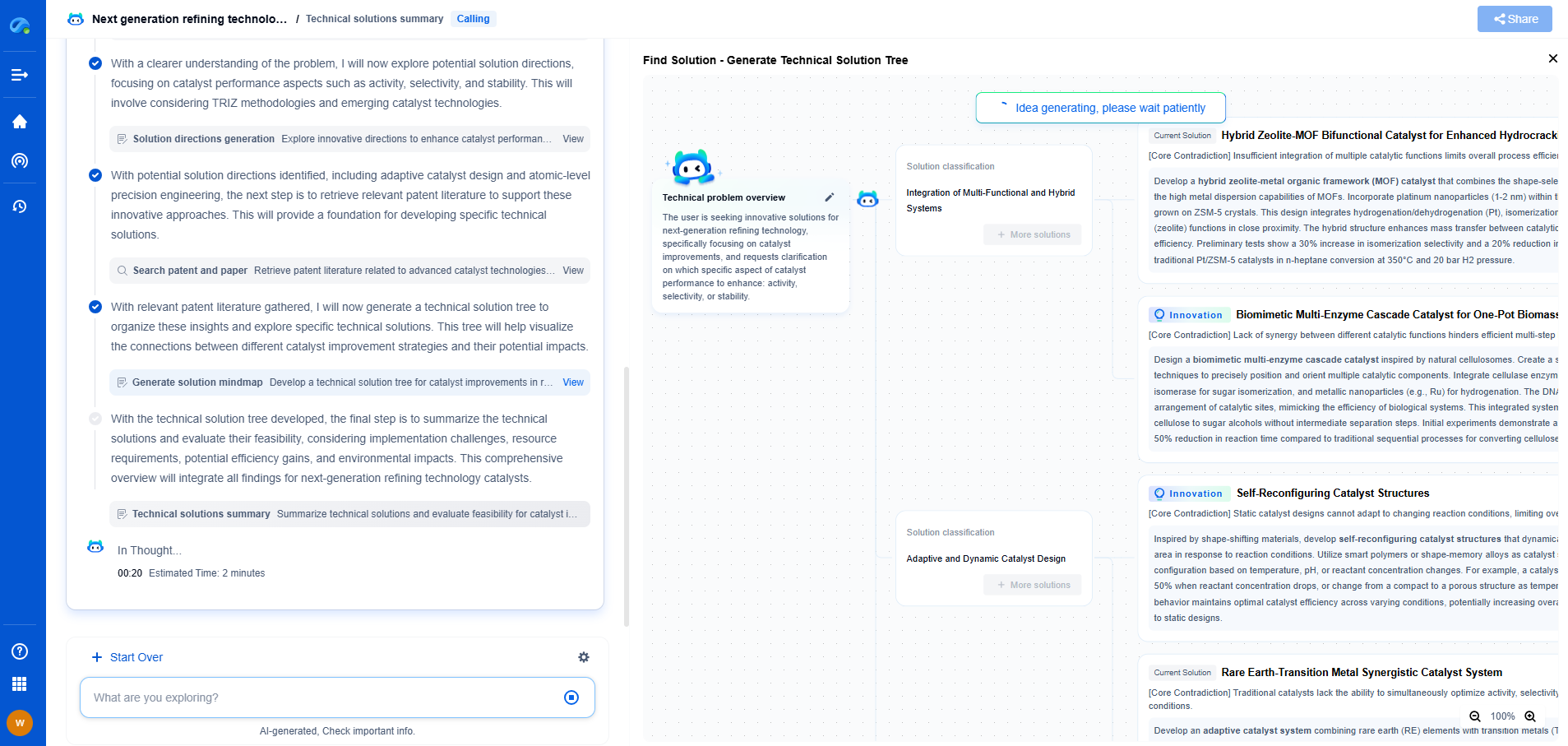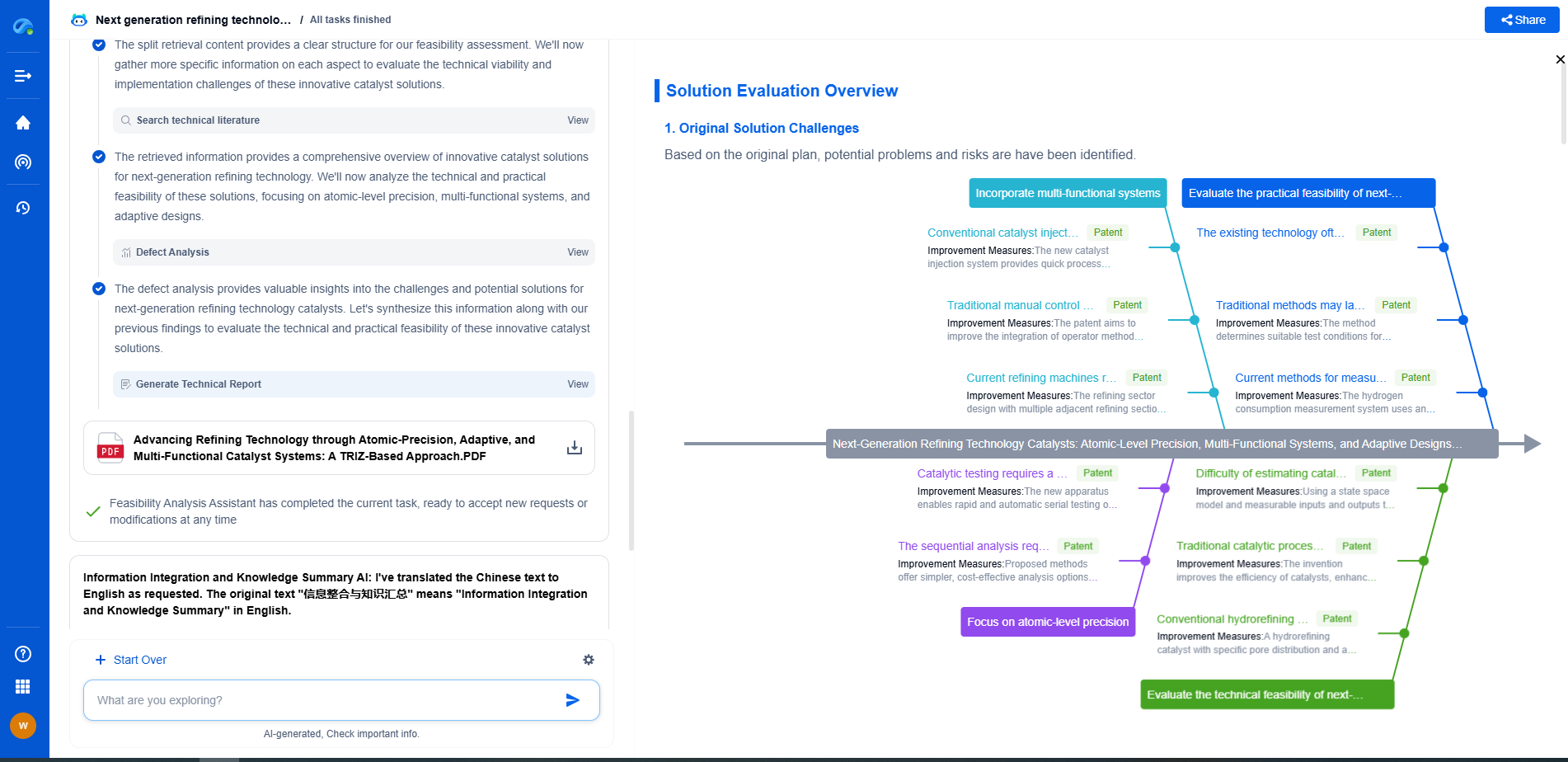Managed pressure drilling vs underbalanced drilling: which is better?
JUN 20, 2025 |
In the ever-evolving landscape of the oil and gas industry, drilling technologies are continually advancing to meet the challenges of extracting hydrocarbons from complex geological formations. Two prominent techniques at the forefront of this evolution are Managed Pressure Drilling (MPD) and Underbalanced Drilling (UBD). Both methods have their unique advantages and considerations, making it crucial for industry professionals to understand their differences, applications, and effectiveness. This blog will delve into the intricacies of MPD and UBD, comparing their benefits and limitations to determine which method might be better suited for specific drilling scenarios.
Understanding Managed Pressure Drilling
Managed Pressure Drilling (MPD) is a versatile drilling technique that allows operators to precisely control the annular pressure profile throughout the wellbore. By manipulating the flow of drilling fluids and adjusting surface backpressure, MPD enables drillers to maintain optimal pressure conditions. This control helps manage uncertainties in pressure changes, reduce non-productive time, and enhance safety by minimizing the risks of kicks and blowouts.
One of the key strengths of MPD is its ability to drill in challenging environments, such as those with narrow pressure windows or highly depleted reservoirs. By effectively managing the equivalent circulating density (ECD), MPD mitigates the common issues of differential sticking and lost circulation, ensuring a more efficient and stable drilling process. Additionally, MPD can be employed in both onshore and offshore drilling operations, making it a versatile choice for various well conditions.
Exploring Underbalanced Drilling
Underbalanced Drilling (UBD) is a technique that intentionally maintains the pressure in the wellbore below the formation pressure during drilling. This approach allows the formation fluids to flow into the wellbore, facilitating enhanced reservoir characterization and reducing the risk of formation damage. UBD is particularly beneficial in reservoirs with low permeability or those prone to damage from drilling fluids.
The primary advantage of UBD is its ability to enhance production rates and recovery factors by minimizing formation damage and improving well productivity. By reducing the differential pressure between the wellbore and the formation, UBD promotes natural reservoir flow, facilitating better evaluation of reservoir characteristics. Furthermore, UBD can significantly decrease drilling costs by reducing drilling fluid losses and mitigating the need for costly remedial operations.
Comparative Analysis: MPD vs UBD
When comparing MPD and UBD, several factors need to be considered to determine which technique is better suited for a particular drilling operation. The choice between these methods largely depends on the specific well conditions and objectives.
1. **Safety and Control:** MPD offers enhanced control over the wellbore pressure, thereby increasing safety by mitigating the risks of kicks and blowouts. In contrast, UBD, while beneficial for reservoir characterization, may pose higher safety risks due to the intentional underbalanced conditions.
2. **Reservoir Characteristics:** UBD is particularly advantageous for reservoirs where formation damage is a concern, as it minimizes the invasion of drilling fluids into the formation. MPD, however, provides better control over drilling in complex geological settings, such as those with narrow pressure windows.
3. **Cost Considerations:** UBD can offer cost benefits by reducing fluid losses and enhancing production rates, but it may require additional equipment and expertise. MPD, while potentially more costly upfront, can prevent costly remedial operations and reduce non-productive time.
4. **Operational Flexibility:** MPD is adaptable to a wide range of drilling environments, from conventional wells to high-pressure, high-temperature (HPHT) settings. UBD, on the other hand, is more suitable for specific scenarios where reservoir evaluation and minimal formation damage are prioritized.
Conclusion: Choosing the Right Technique
In conclusion, both Managed Pressure Drilling and Underbalanced Drilling have distinct advantages that make them suitable for different drilling scenarios. MPD is the preferred choice when safety, precise pressure control, and adaptability to complex environments are paramount. On the other hand, UBD offers significant benefits in enhancing reservoir evaluation and production rates, particularly in reservoirs prone to formation damage.
Ultimately, the decision between MPD and UBD should be based on a thorough understanding of the well conditions, safety considerations, and project objectives. By carefully evaluating these factors, drilling engineers can choose the most appropriate technique to optimize drilling performance and reservoir recovery in a safe and cost-effective manner.
Navigating the Complexities of Drilling Innovation? Let AI Do the Heavy Lifting
In an industry where subsurface conditions, materials science, and drilling dynamics evolve rapidly, staying ahead of technical innovation and protecting your intellectual property can be overwhelming.
Patsnap Eureka, our cutting-edge AI assistant, is built for R&D and IP professionals in high-tech industries like drilling technologies. Whether you're optimizing rotary steerable systems, evaluating high-temperature materials, or exploring next-gen automation in directional drilling, Eureka enables real-time analysis of the latest patents, technology landscapes, and competitive movements—all from one intelligent, intuitive platform.
Ready to accelerate your development cycle and make strategic decisions with confidence? Explore Patsnap Eureka today—where smart drilling starts with smarter insights.
- R&D
- Intellectual Property
- Life Sciences
- Materials
- Tech Scout
- Unparalleled Data Quality
- Higher Quality Content
- 60% Fewer Hallucinations
Browse by: Latest US Patents, China's latest patents, Technical Efficacy Thesaurus, Application Domain, Technology Topic, Popular Technical Reports.
© 2025 PatSnap. All rights reserved.Legal|Privacy policy|Modern Slavery Act Transparency Statement|Sitemap|About US| Contact US: help@patsnap.com

